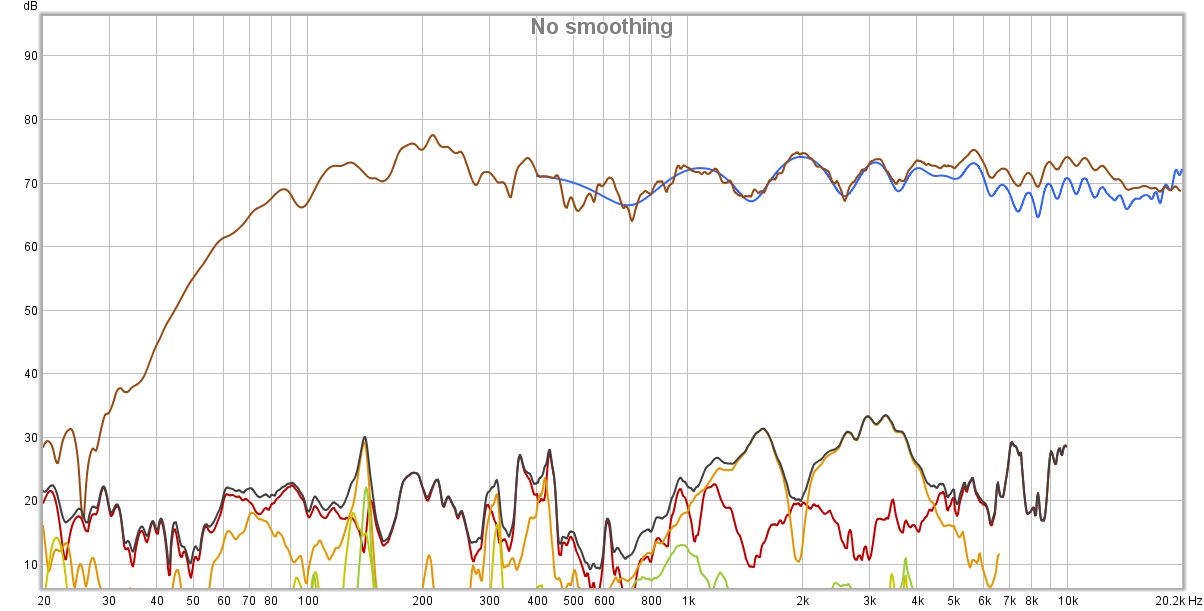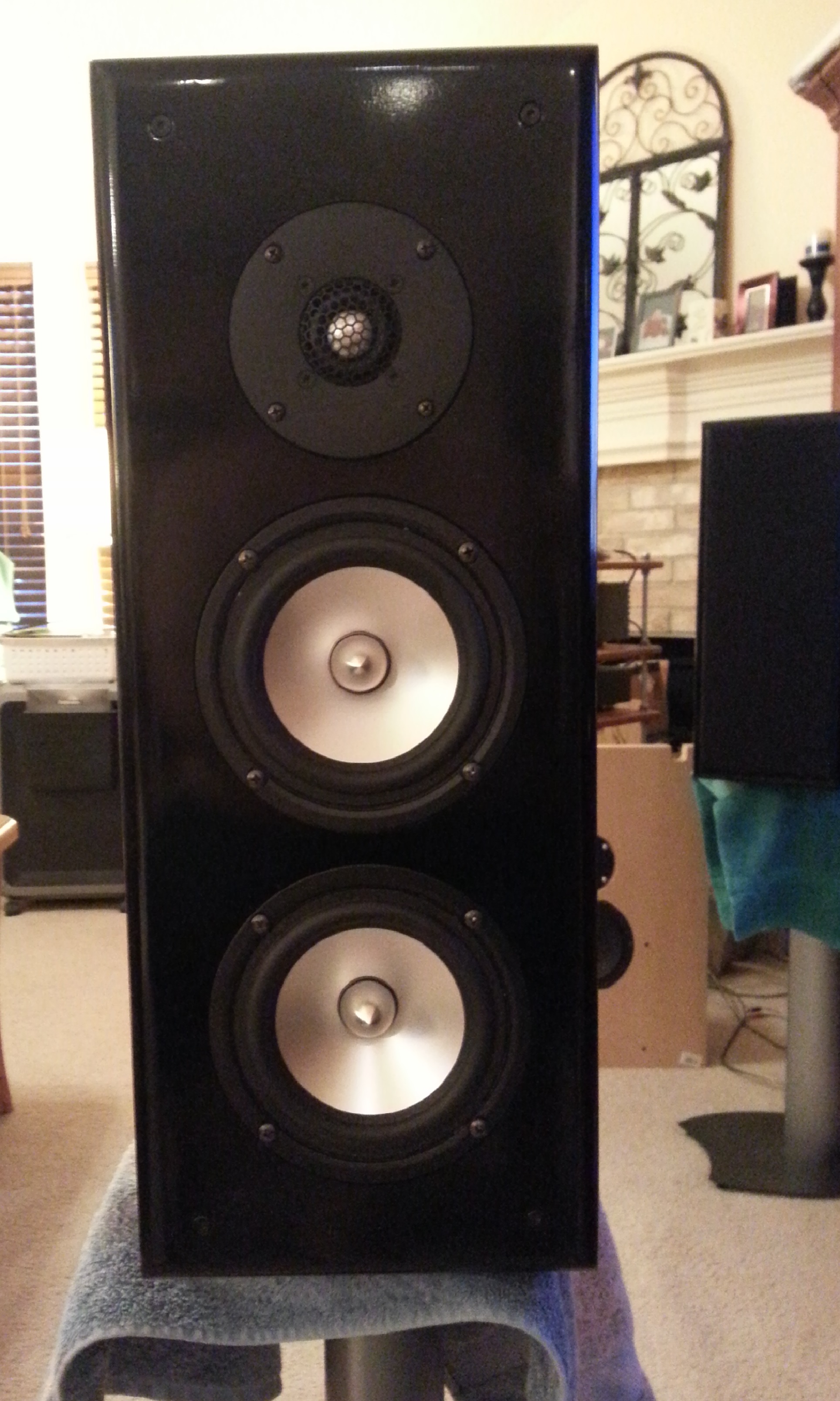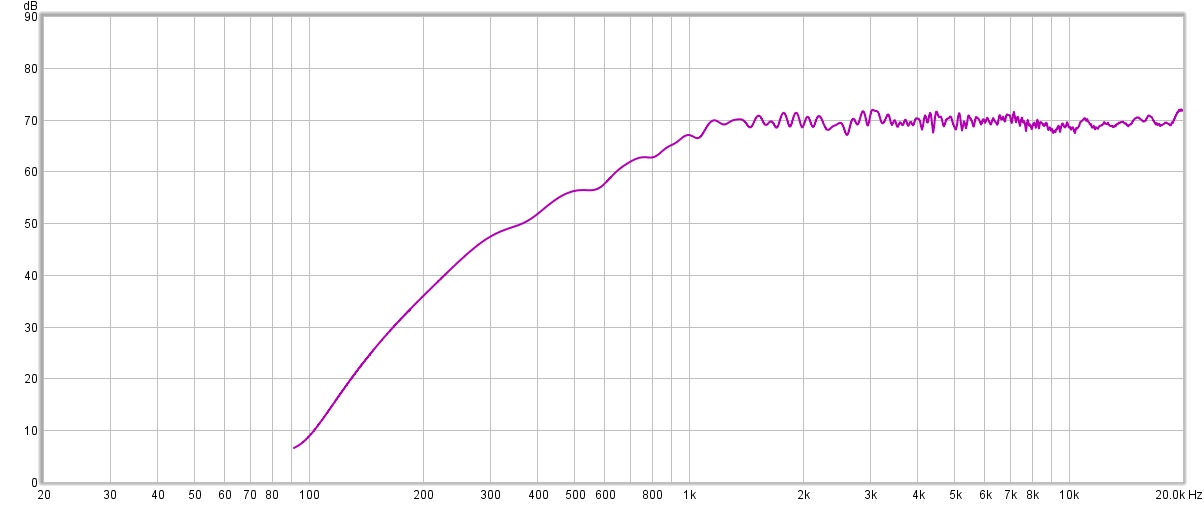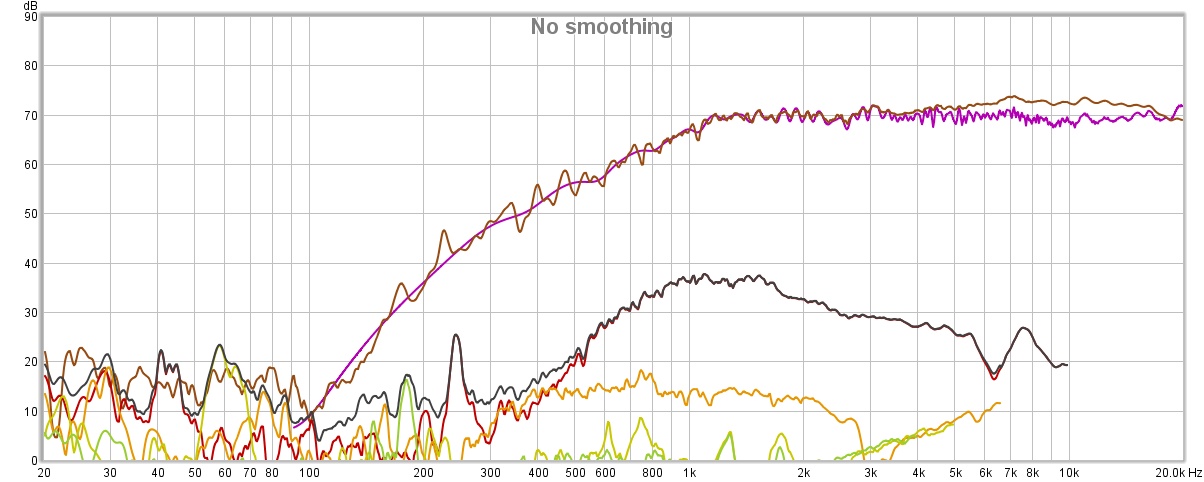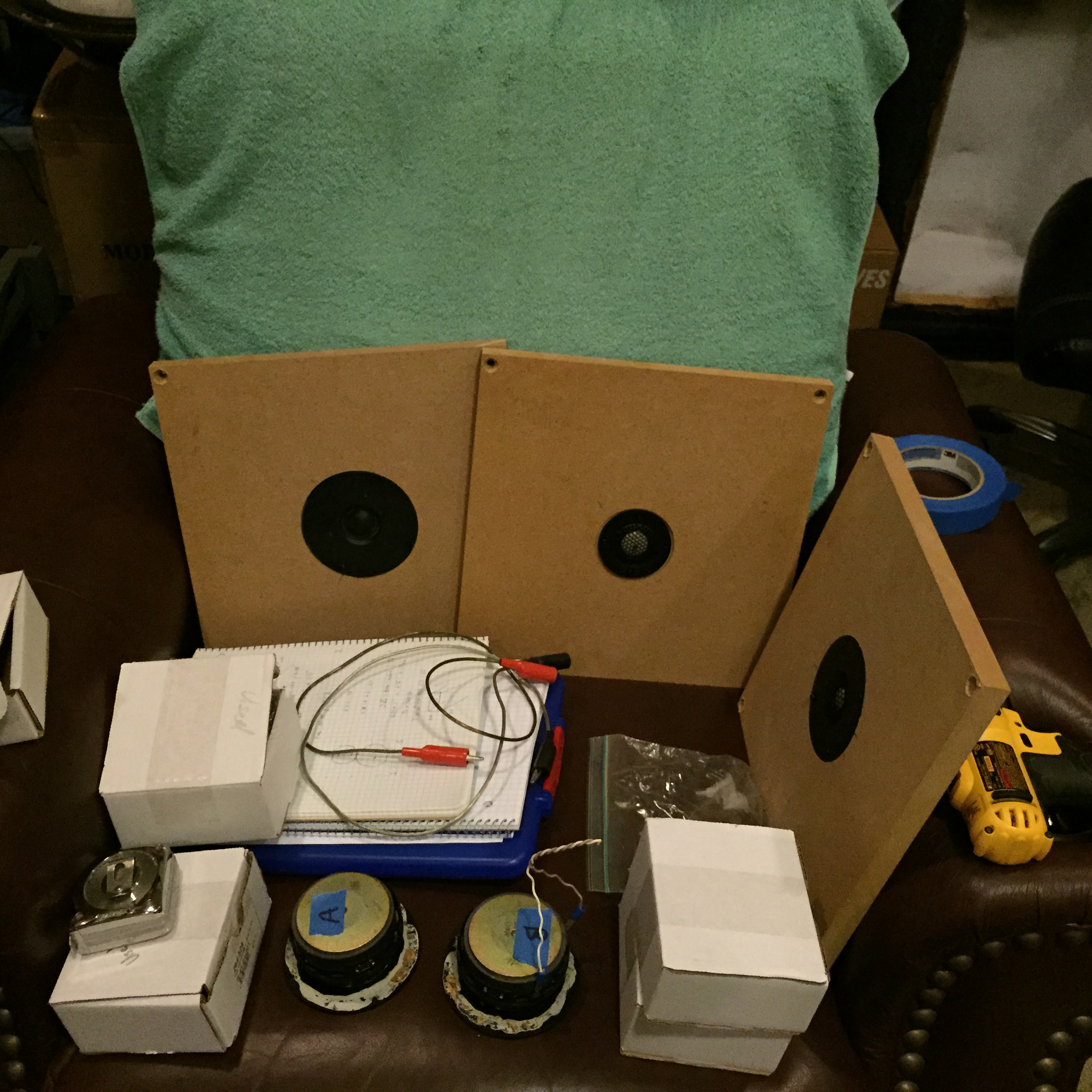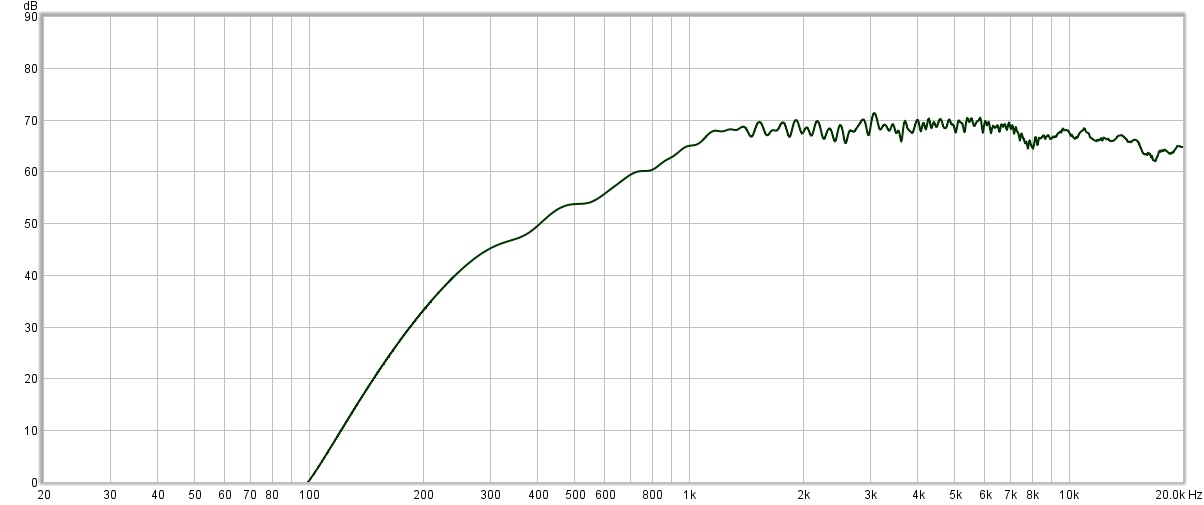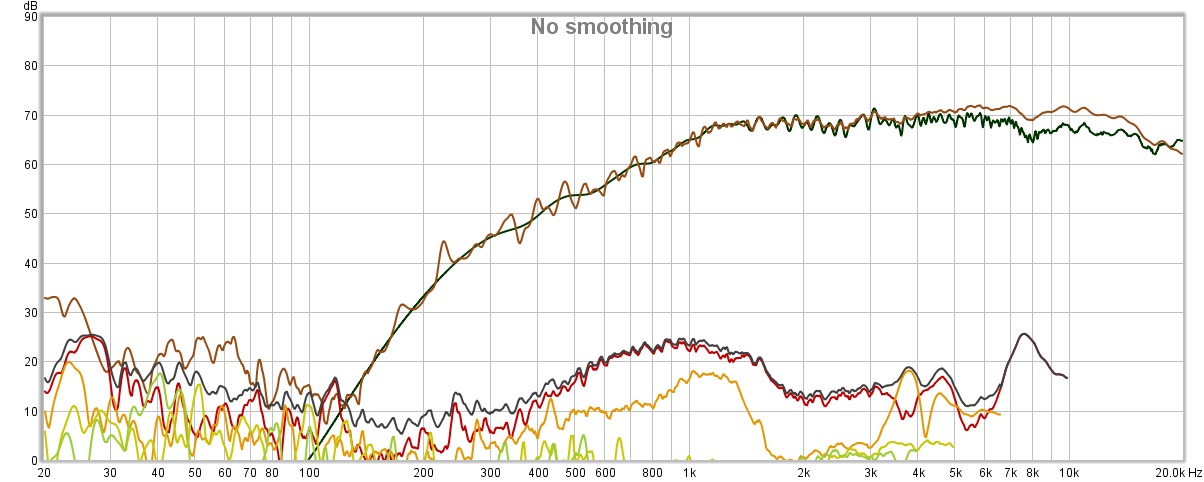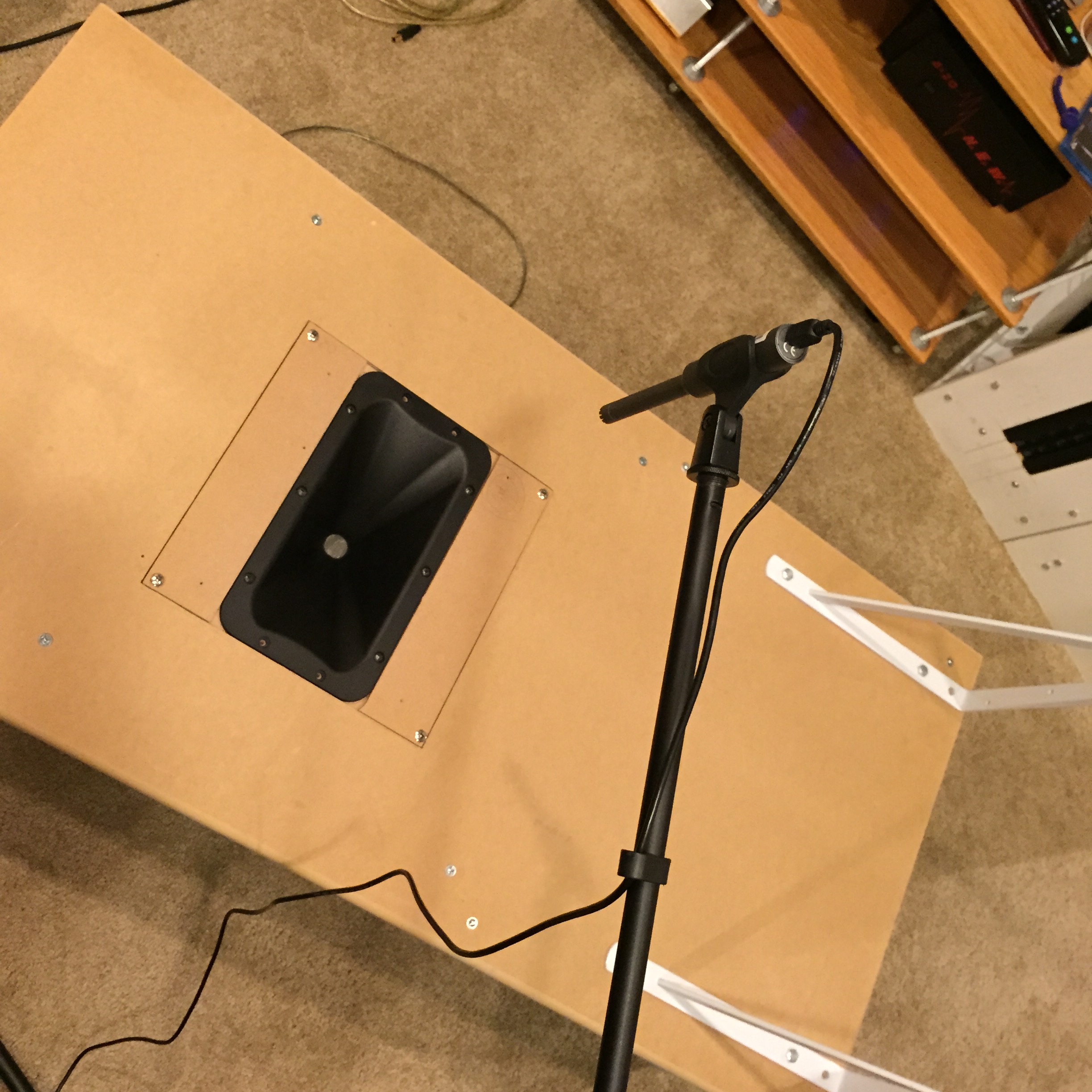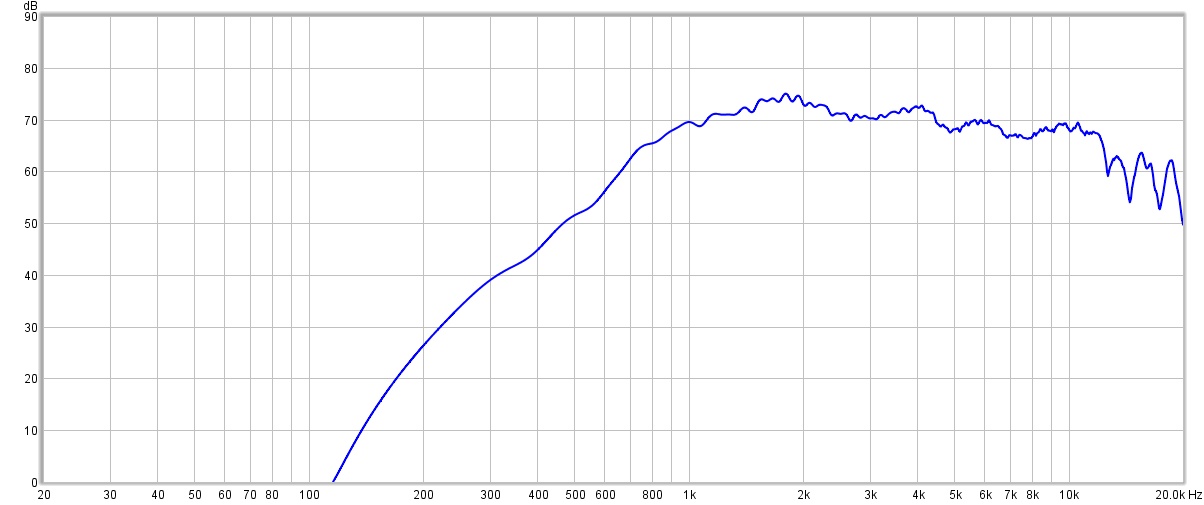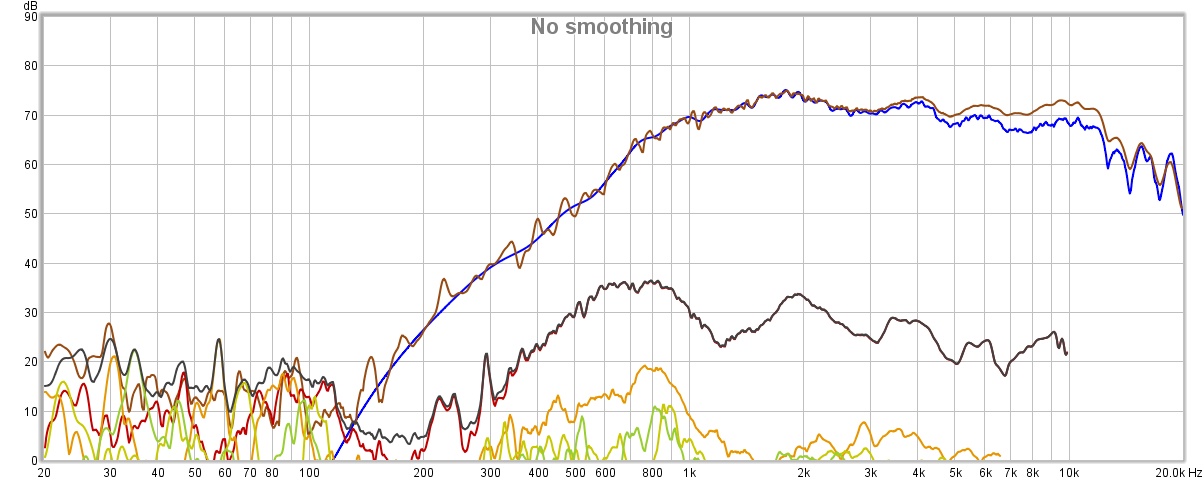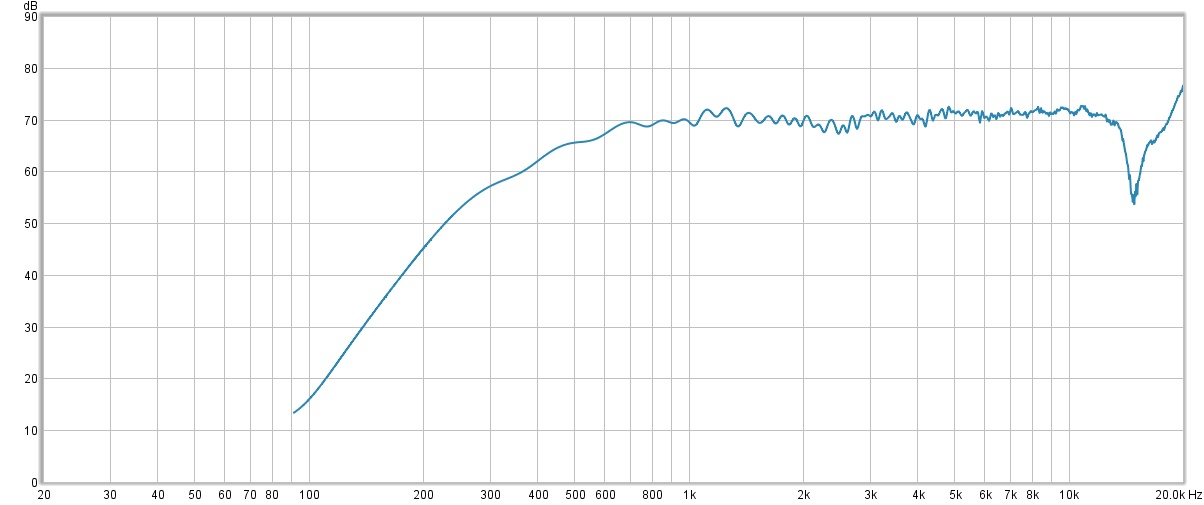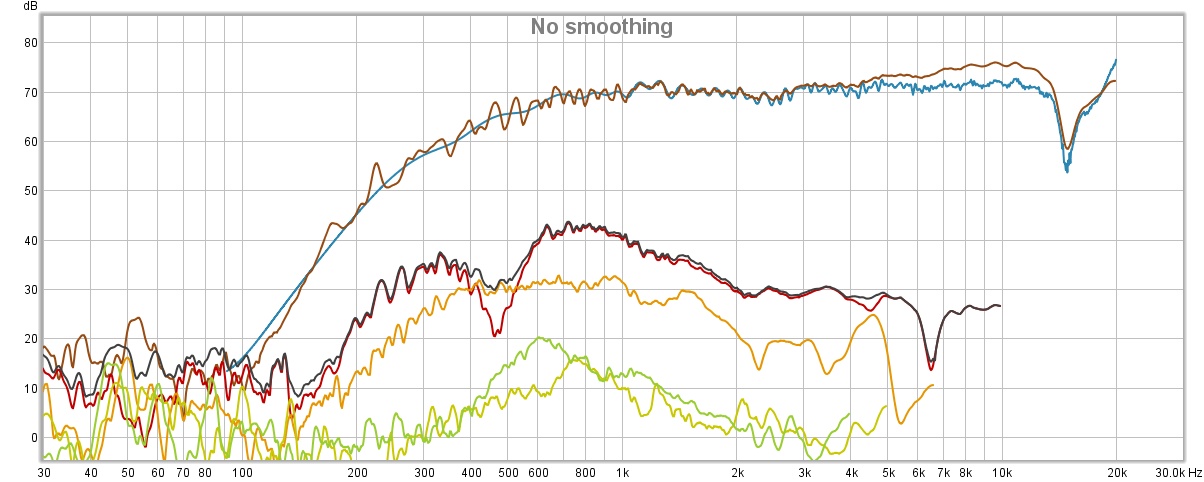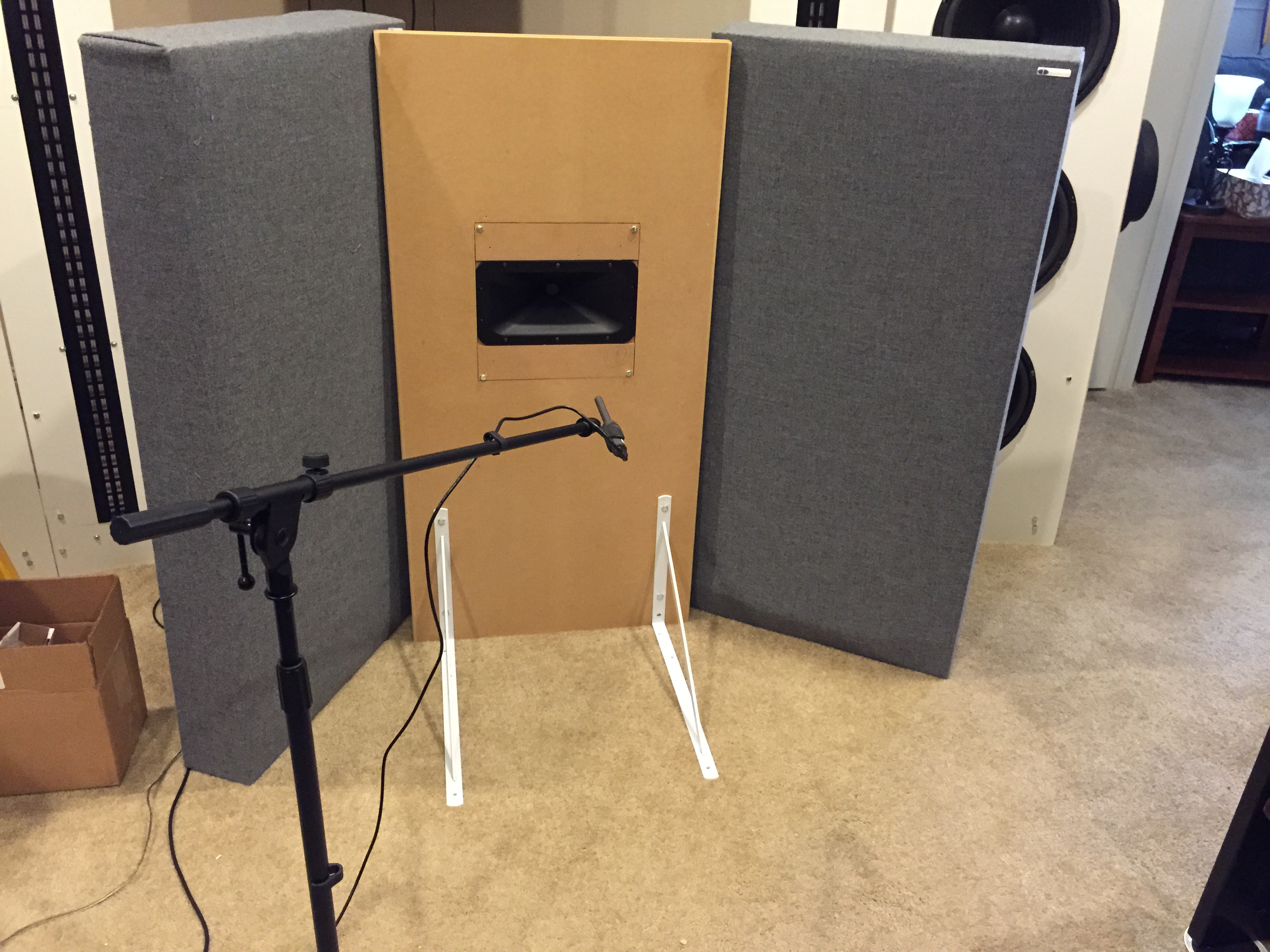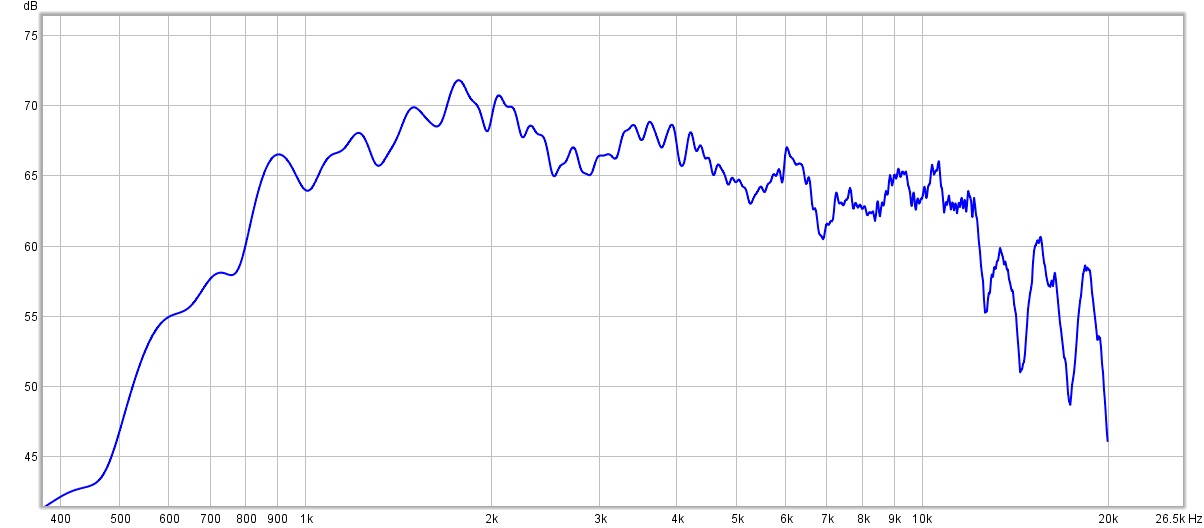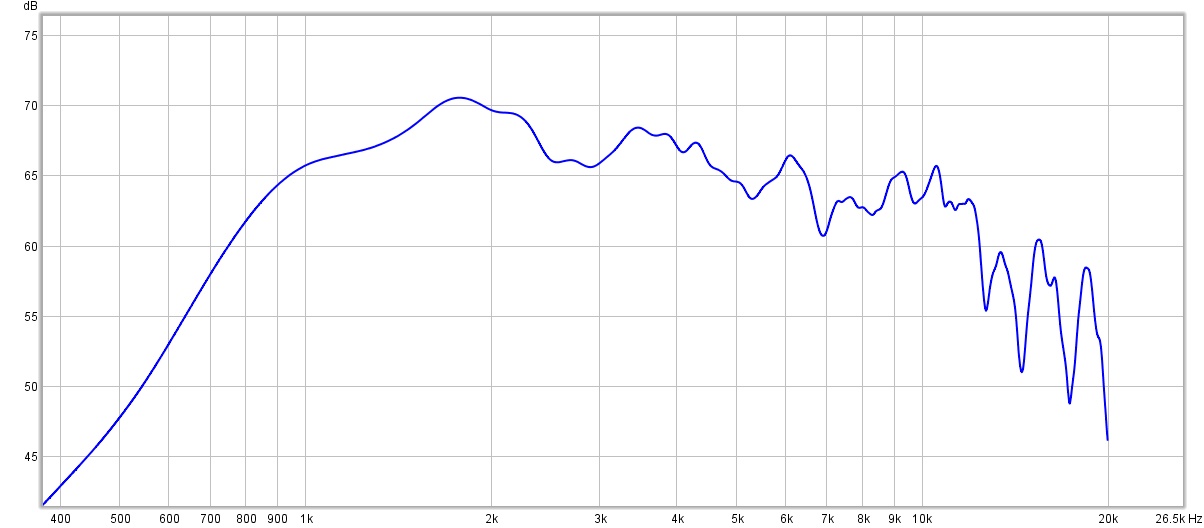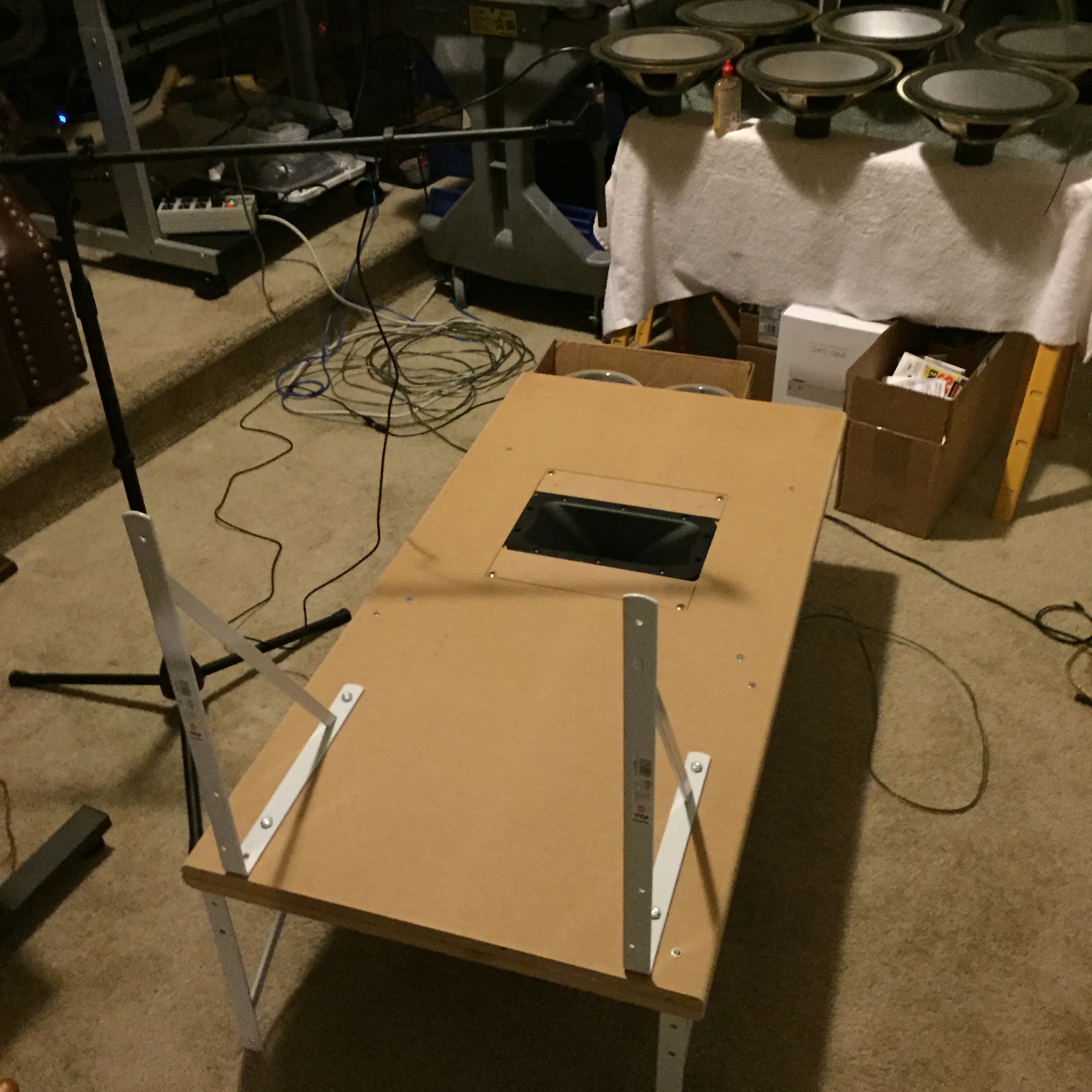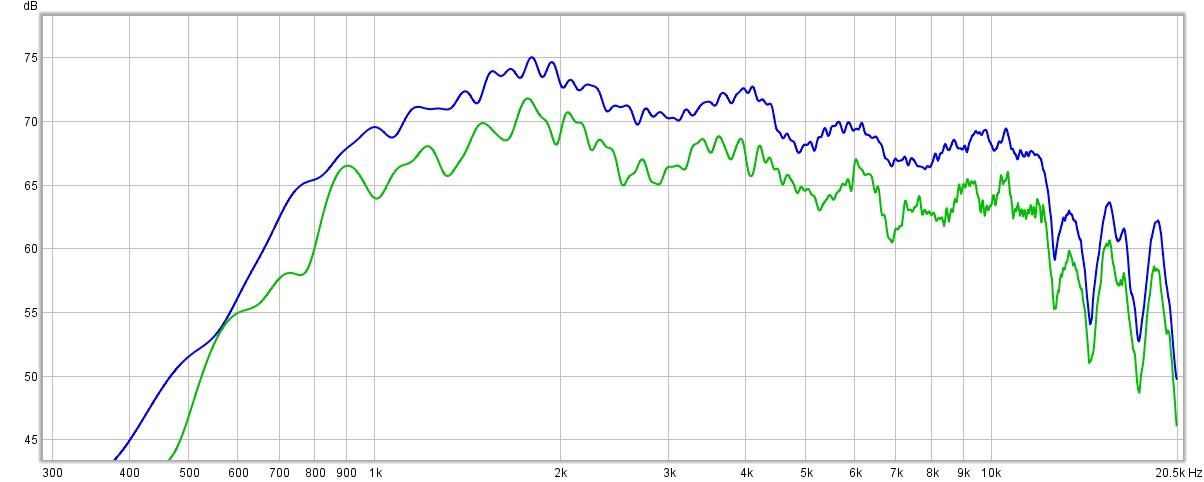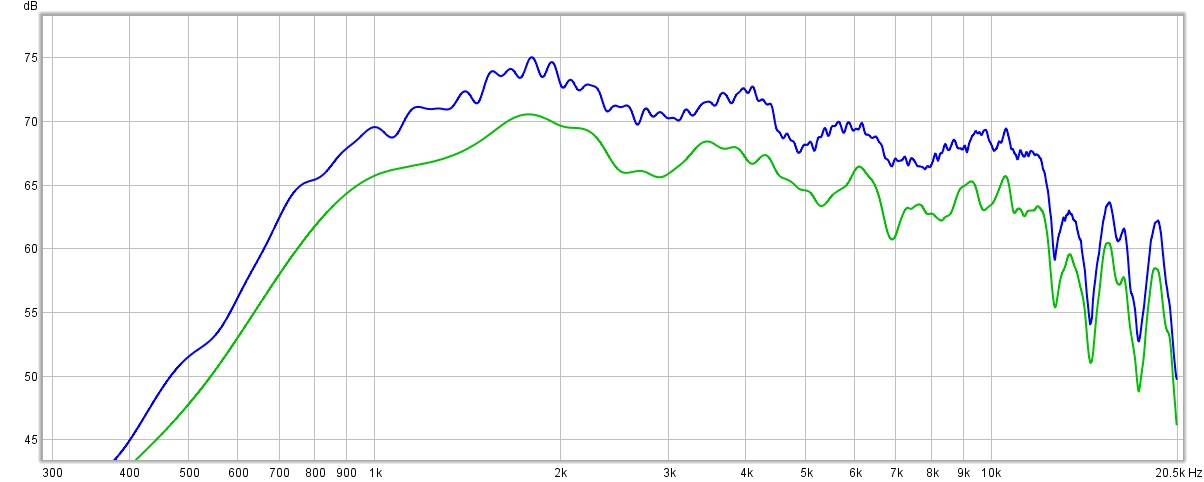I finally got around to a final modification to the “built-in” speakers of the entertainment center (AKA Speaker IV). The way the speakers sit in the cabinet leaves a gap of about an inch between the baffle and the door. That gap is an acoustic mass that has to interact with the speaker output, creating resonances.
Solution: add some acoustic foam around the front of the speaker to seal the gap. So the foam cut-outs for the drivers are something of a hatchet job. It works. Well. The mid-range, such as voices, are so much clearer, more intelligible. Little details that were masked before are now discernible.
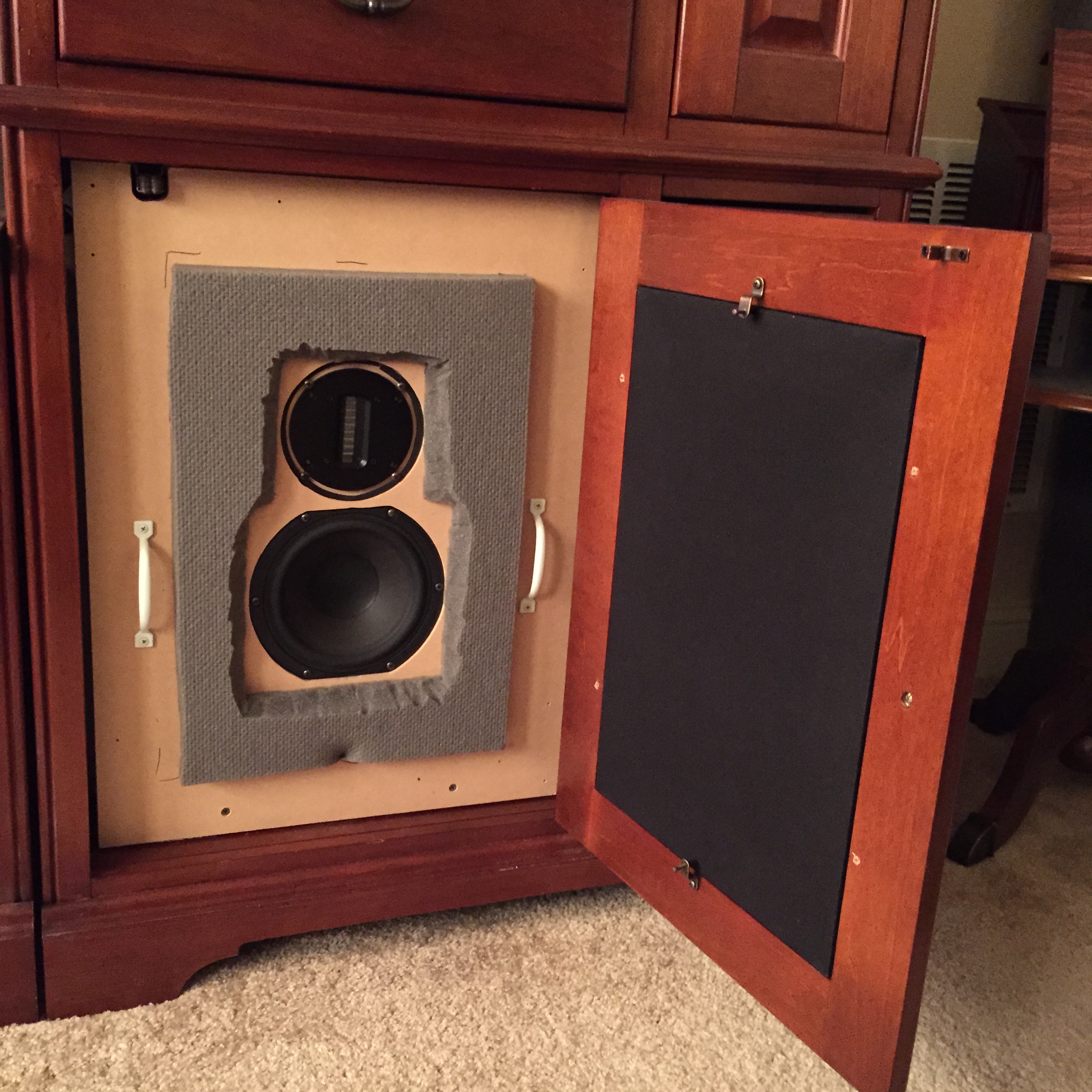 Drivers are a 2″ G2Si ribbon tweeter and Peerless 6.5″ HDS series mid-bass. Cross-over is acoustic 4th order LR at 2.5 kHz. The mid-bass is in a sealed cabinet tuned to 80 Hz. Why so high? The intention is for these to be crossed over to a subwoofer at 80 Hz as “small” speakers.
Drivers are a 2″ G2Si ribbon tweeter and Peerless 6.5″ HDS series mid-bass. Cross-over is acoustic 4th order LR at 2.5 kHz. The mid-bass is in a sealed cabinet tuned to 80 Hz. Why so high? The intention is for these to be crossed over to a subwoofer at 80 Hz as “small” speakers.
Response tested sitting about 32″ off the floor – pre foam. (I’ll do an update when I do a post-foam test.) Test level is 1 watt, measurement distance 18″. Measurement window is about 3.5 msec, so the response is smoothed.
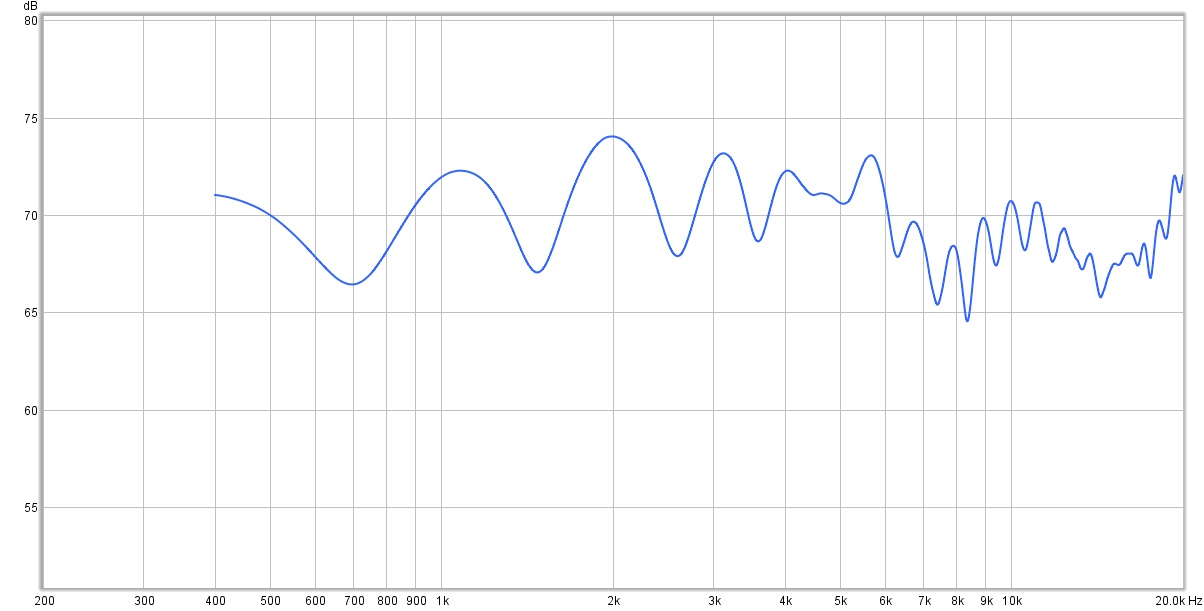 The distortion levels are respectable. The distortion above 1 kHz is mostly 3rd harmonic (green) which suggests the ribbon tweeters would sound best crossed over above 4 kHz, as well as the mid-bass could be crossed over lower as part of a 3-way design. (Will have to confirm with additional measurements of the individual drivers.) Alas, not a big enough opening in the entertainment center for 3 drivers.
The distortion levels are respectable. The distortion above 1 kHz is mostly 3rd harmonic (green) which suggests the ribbon tweeters would sound best crossed over above 4 kHz, as well as the mid-bass could be crossed over lower as part of a 3-way design. (Will have to confirm with additional measurements of the individual drivers.) Alas, not a big enough opening in the entertainment center for 3 drivers.
